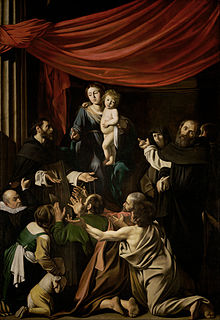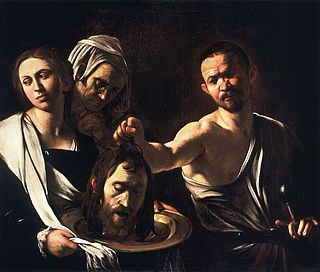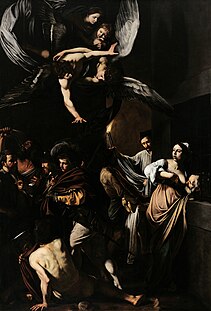 W
WThe Crucifixion of Saint Andrew (1607) is a painting by the Italian Baroque master Caravaggio. It is in the collection of the Cleveland Museum of Art, which acquired it from the Arnaiz collection in Madrid in 1976, having been taken to Spain by the Spanish Viceroy of Naples in 1610.
 W
WDavid with the Head of Goliath, c. 1607, in the Kunsthistorisches Museum Gemäldegalerie, Vienna, is a painting by the Italian artist Caravaggio (1571–1610). Peter Robb believes it to have been acquired by the conde de Villamediana in Naples between 1611 and 1617, as Giovanni Bellori records Villamediana as having returned to Spain with a half-figure of David by Caravaggio.
 W
WThe Flagellation of Christ is a painting by the Italian Baroque painter Caravaggio, now in the Museo Nazionale di Capodimonte, Naples. It is dated to 1607, and may have been reworked by the artist in 1610. It is not to be confused with Christ at the Column, another Flagellation by Caravaggio of the same period.
 W
WThe Madonna of the Rosary is a painting finished in 1607 by the Italian Baroque painter Caravaggio, now in the Kunsthistorisches Museum in Vienna. It is the only painting by Caravaggio that could be called a standard Baroque altarpiece.
 W
WSalome with the Head of John the Baptist (London), c. 1607/1610, is a painting by the Italian master Caravaggio now in the collection of the National Gallery in London.
 W
WThe Seven Works of Mercy, also known as The Seven Acts of Mercy, is an oil painting by Italian painter Caravaggio, circa 1607. The painting depicts the seven corporal works of mercy in traditional Catholic belief, which are a set of compassionate acts concerning the material needs of others.
 W
WSusanna and the Elders is a painting by Flemish artist Peter Paul Rubens from 1607. It is housed in the Galleria Borghese in Rome, Italy. There is another version, a youthful work from 1608, in Real Academia de Bellas Artes de San Fernando, in Madrid.